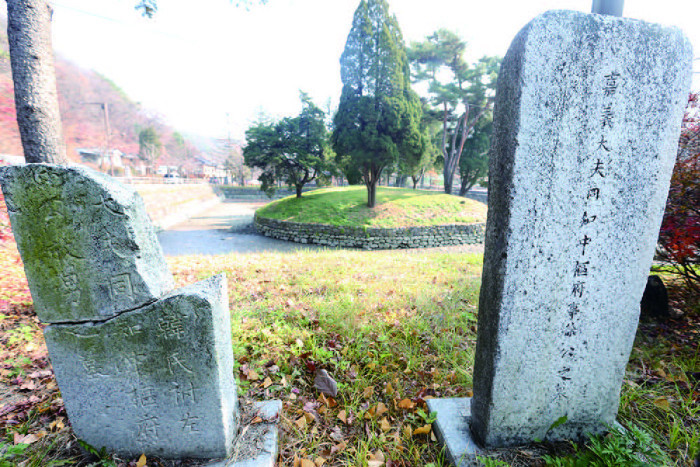경기문화재단
Sueojangdae and Sueocheong
The story of Seo Heunnam
"Stories on the Road" is a story about a UNESCO World Heritage site and a story. It will tell you the life and spirit of our ancestors in the ancient road of The old Namhansanseong path. |
Sueojangdae and Sueocheong

Sueojangdae
“Sueocheong, a standing army in the south of Hanyang”
Sueojangdae is the command center and a surveillance facility located at the highest ground between the west and south gates of Namhansanseong Fortress. Sueosa, the chief commander in charge of the defense of Namhansanseong Fortress, is the leader of Sueocheong, one of the five military camps of the Joseon Dynasty. After experiencing the Japanese invasion of 1592, Joseon felt the dire need for a standing army, which led to the installation of an agency called Hullyeondogam, or a military camp that defended the capital city, during the war. Hullyeondogam used to train and maintain the standing army that is essential in times of war. Along with Hullyeondogam, four regional standing armies were established, and one of them, Sueocheong, was set up in Namhansanseong Fortress. After Hullyeondogam was installed, Joseon sought ways to defend Hanyang, its capital, and first installed Eoyeongcheong where the chongpogun soldiers using firearms could be developed. Chongyungcheong was then installed to defend the north of Hanyang. The headquarters of Chongyungcheong was in Bukhansanseong Fortress, and its name means to defeat enemies at Bukhansanseong Fortress before they enter the capital. Sueocheong of Namhansanseong Fortress was established afterwards. Together with the finally installed Geumwiyeong, an army under the direct control of the king, the system of these 5 military camps was a core military system that continued until the late Joseon Dynasty.
Seo Heunnam, the greatest among common men

The gravestone of Seo Heunnam
“Seo Heunnam, the role model of the common people”
From the “Annals of the Joseon Dynasty” is found a very unique piece on a common citizen, rather than a general or a government official, during the time of the Qing Invasion. According to the record, a man named Seo Heunnam volunteered as a communication soldier when Namhansanseong Fortress was besieged, and secretly went in and out of the fortress by disguising himself under various identities. He served as a communication channel for janggye, or reports submitted by officials in different areas of Joseon, and even killed some enemies in urgent situations while spying on the Qing army camp. He seems like the main character of a spy movie. The 5 military camps of Joseon, including Sueocheong, recruited standing armies and workforces needed for other tasks, and the targets for recruitment did not discriminate based on social classes, even offering the benefit of a rise in social status if one achieves a great feat in battle. Thanks to his wonderful accomplishments during the Qing Invasion, Seo Heunnam escaped the lowest social class to become common folk, after which he was given a government position to eventually reach the status of dangsanggwan. The life story of Mr. Seo set an example for the other common people and produced a number of customs about Mr. Seo that would be passed down for generations. There is a tombstone commemorating Seo Heunnam at Namhansanseong Fortress, and the city of Gwangju has designated and been protecting it as a local cultural heritage.
<ggc의 모든 콘텐츠는 저작권법의 보호를 받습니다.>
세부정보
Stories on the Road
Published by/ Namhansanseong World Heritage Centre, Gyeonggi-do The Center for Gyeonggi Studies, Gyeonggi Cultural Foundation
Published on/ November 24, 2017
Supervised by/ Lee Ji-hoon, Director of the Center for Gyeonggi Studies, Gyeonggi Cultural Foundation
Planned and coordinated by/ Chae Chi-yong, Senior Researcher at the Center for Gyeonggi Studies, Gyeonggi Cultural Foundation Park Da-seul, Researcher at the Center for Gyeonggi Studies, Gyeonggi Cultural Foundation